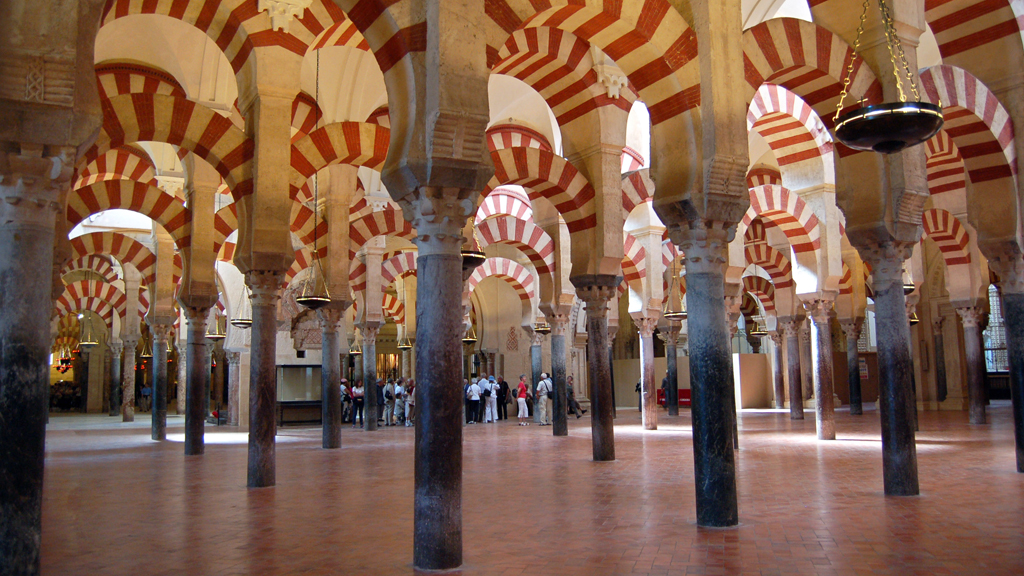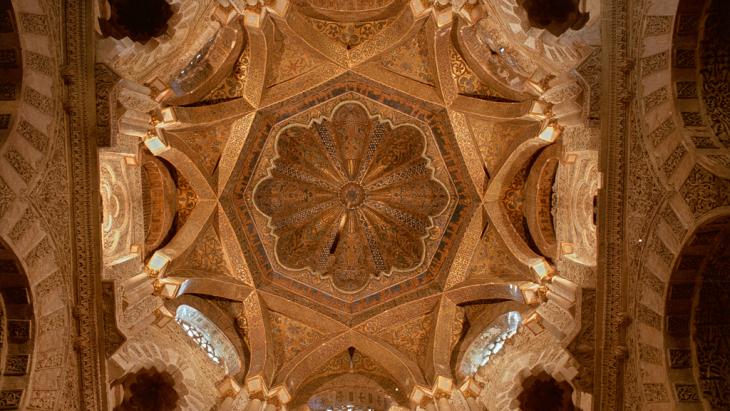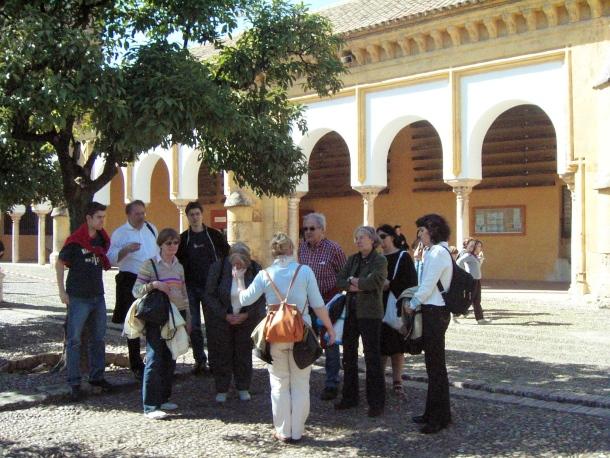Is Cordoba denying its Islamic heritage?

The ability to criticise itself is one of Europe's greatest virtues. At times, however, it is coupled with a fatal tendency to be politically correct. Take, for instance, a recent online petition that was drafted in Spain in late 2013 by historians, lawyers and journalists, was signed by 91,000 people and caused a great stir.
The petition calls for La Mezquita, the cathedral in Cordoba, to be placed under state control. It claims that the current Bishop of Cordoba is co-opting the building "legally, economically and symbolically". Construction of the building began in the year 785 by Emir Abd al Rahman I. It became the main mosque for the city, which was then under Moorish rule. By 1009, it had been extended to make it the world's third-largest mosque. Then in 1236, it was consecrated as a cathedral during the Christian Reconquista.
The bishop, the petition says, is quietly removing Islamic symbols and has excised the word "mosque" from the official brochure of the "Mezquita Catedral". The entrance fees, which were recently raised drastically, allegedly go to the Catholic Church alone. All these factors, say the petitioners, disregard the fact that UNESCO made the Mezquita a world heritage site in 1986 because it considered the building a "symbol of harmony between different civilisations and religions".
A region of architectural palimpsests
That's a convincing argument, at least with regard to tolerance within early Islam. The emir's architects had no qualms about using nine hundred ancient pillars from ruined temples and early Christian basilicas from Roman Cordoba for the building, although they would have been considered "heathen" at the time. Some of them originated in St Vincent's Church, the predecessor to the mosque, which had served both Christians and Muslims before the Christian owners sold it to make way for the mosque.

By the time the emirate of Cordoba became a caliphate in the tenth century, the city's population had grown to 500,000. Muslims, Jews and Christians lived there, using and maintaining the Roman bridge (still standing today) – and building their places of worship unhindered. Small wonder then that nineteenth-century art historians theorised that Europe's Gothic architecture had its origins in the pointed arches and vaults of Spain's Moorish mosques and palaces.
It was not only Cordoba's Mezquita that served as a model example, so too did a wealth of other buildings. The best known of them is the Alhambra, built in Granada as a Nasrid palace in the thirteenth and fourteenth centuries; the most beautiful examples are found not only in Cordoba, but also in Toledo. The latter city's most frequently visited church, Santa Maria la Blanca, started out in 1180 as a synagogue in the Moorish style and was converted to Christian use in 1405 after the expulsion of the Jews from Spain. Another attraction is the small El Cristo de la Luz, built as a mosque in 999, declared a church in 1085 and extended in the Andalusian Moorish Mudejar style during the twelfth century.
An eyesore amid delicate architectural beauty
Hundreds of years later, such a Moorish-style extension would have been unthinkable. The further the Reconquista progressed, the more fanatical the approach to all traces of Moorish culture became. In 1227, Toledo's main mosque was not even protected from destruction by the fact that it had originally been the court church of the Visigoth kings. Ferdinand III, known as the saintly king, demanded an "untainted" Christian Gothic church and had the mosque demolished. In Cordoba, he was more tolerant: although the Mezquita was Christianised, it remained untouched aside from the installation of a number of small chapels.
Three hundred years later, all forbearance was gone. In 1523, the Bishop of Cordoba laid the foundation stone for a new cathedral in the middle of the mosque courtyards, in spite of protests from the city council. When Emperor Charles V viewed the almost complete church he is said to have commented: "You have taken something unique in all the world and destroyed it to build something you can find in any city." Nevertheless, such sentiments did not stop him from building a bunker-like cubic palace inside the Alhambra, an eyesore right in the middle of the delicate fabric of the Moorish courtyards and pavilions.
Denying the country's cultural history
From this perspective, the present Bishop of Cordoba, Demetrio Fernández, seems on a par with his dogged predecessor of 1523. The petitioners have yet to provide evidence of the alleged removal of Islamic symbols. Yet anyone can see that the bishop treats the Mezquita's tradition as a mosque as an insignificant episode in the building's history and has repeatedly stated that the building is "doubtlessly a cathedral".

The fact that the Mezquita, the indelible old name of the cathedral (officially called the "Cathedral of our Lady of the Assumption"), is the Spanish word for mosque, changes nothing about the reprehensible nature of attempts to erase memories of its Moorish origins. In fact, it's rather ridiculous: anyone denying Spain's Moorish legacy is denying almost five hundred years of the country's cultural history – and falling back to the fanaticism of the Franco era, which ignored or dismissed as marginal everything Moorish.
A global trend
The petition claims that Cordoba's Mezquita is not the sole property of the Catholic Church (in 2006, Demetrio Fernandez had it entered in the land register is his own name), but a world heritage site for all humanity. This argument will be a decisive factor in the Andalusian regional government's current consultations on the matter.
That the petitioners' zeal is tinged with blue-eyed idealism is evident. The exemplary "harmony between different cultures" of which they rhapsodise is increasingly giving way to narrow-minded confrontation on the international stage. When the two giant Buddha statues in Bamiyan — also a world heritage site that had survived unharmed one and a half millennia of Islamic rule as a cross between ancient Greek and regional art — were blown up as the work of "infidels" by mindless Taliban in 2001, the event was considered an exception.
Since then, however, we have seen ancient art in Kabul destroyed — or more frequently stolen and sold off — by Taliban because it was "heathen"; we have heard that American tanks drove over the ruins of Babylon in Iraq; we have witnessed ancient Egyptian treasures from the National Museum being shattered in the Cairo uprisings; and we have heard Muslim fundamentalists calling for the destruction of all ancient Egyptian monuments.
As stable as a shifting sand dune
The voices of well-meaning German architects supporting Egypt's claim for the return of the Nefertiti bust have long since fallen silent. Similarly, the recent demand in the Turkish parliament for the Hagia Sophia to become a mosque again caused little more than embarrassed silence in Europe, a silence in which the Spanish call might also fade away unheard. People are gradually coming to the conclusion that the common civilisational foundation spanning all faiths and ideologies, honoured ceaselessly by UNESCO, has become about as stable as a shifting sand dune.
Dieter Bartetzko
© Frankfurter Allgemeine Zeitung
Translated from the German by Katy Derbyshire
Editor: Aingeal Flanagan/Qantara.de
